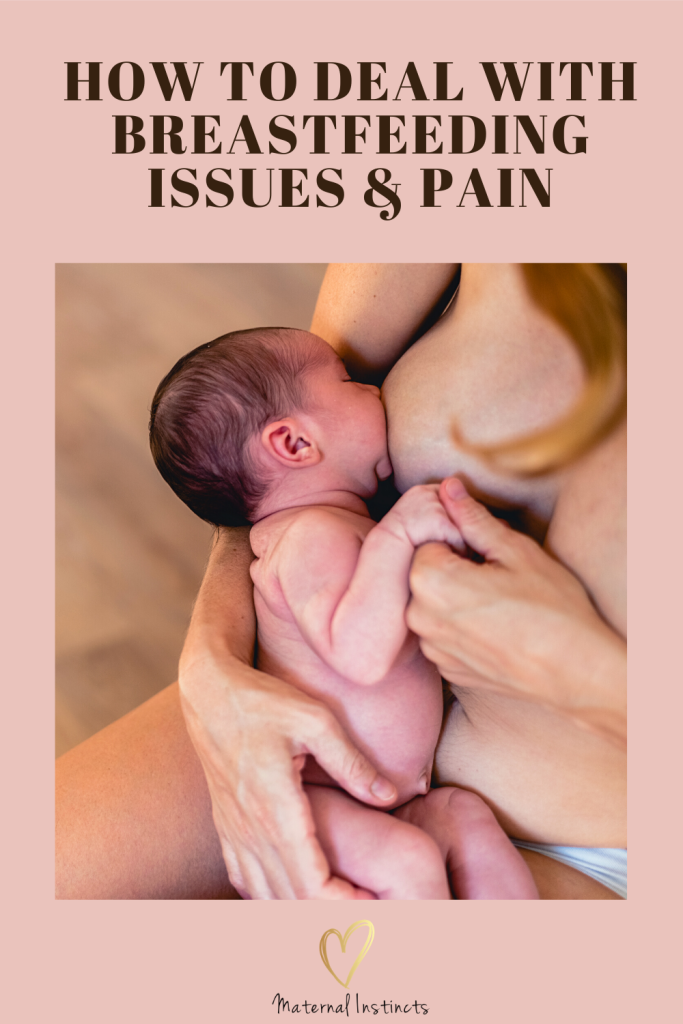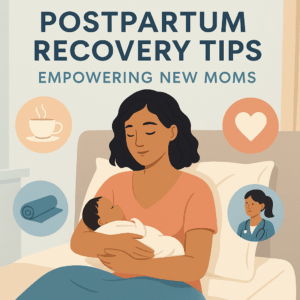How to Deal With Breastfeeding Issues & Pain

Are you having a tough time nursing your little one? Even though every mother’s breastfeeding experience is unique, many mothers face similar breastfeeding issues. Whether you’re a first-time mom or more experienced, you may come up against different issues with each baby. We’ve put together some common breastfeeding issues and how you can find solutions or relief for them.
Problem #1: Baby won’t latch properly or at all
When your baby latches on properly, it’ll help prevent nipple pain. If your baby doesn’t latch on fully, the entire nipple and areola isn’t in their mouth, and it may hurt. To encourage a good latch, have some skin-to-skin contact when your baby is calm. Cradle baby in your arm, making sure to support the back and neck. A breastfeeding pillow bolstered with another pillow can help you get baby to the right height.
Then, when your baby opens her mouth, nestle her in comfortably. Your nipple should point towards the roof of her mouth, and when you look down, you should see only a sliver of the top of your areola. Her nose shouldn’t be buried in your breast, and when she releases, your nipple should be its fairly normal shape, not compressed or wedge-shaped. It shouldn’t hurt during or after breastfeeding either. If it does, you may want to contact a lactation consultant for some extra guidance.
Problem #2: Sore or chapped nipples
If you’re new to breastfeeding and you find your nipples are tender, that’s okay. It happens to many mothers. Once you’ve found your groove and your baby finds a good latch, it should begin to feel more comfortable. However, you might experience nipples that are chapped, sore, or blistered. If this happens, it’s a good idea to take a break from nursing to pump instead. Use a soothing ointment that will encourage healing and breast pads to ease the pain as well. Since breast milk has antibacterial properties, you can even apply fresh breast milk to your nipples to soothe them and reduce the chance of infection.
Need a little extra help finding relief? Wear comfortable bras and clothing that don’t put pressure on your nipples. Change your bra’s nursing pads often. Avoid harsh soaps or ointments that can make your nipples more dry and chapped, too.
Problem #3: Clogged ducts
A clogged milk duct is a common breastfeeding issue. It can happen if breast milk isn’t removed in a timely manner, so residual milk remains and creates a blockage. It might also happen from breast pressure caused by restrictive clothing, a weak breast pump, a bad latch, or plain old stress.
If you have a clogged milk duct, you might notice an area of your breast that feels lumpy or firm. There might be swelling, redness, or tenderness. To find relief:
- Continue to nurse
- Get plenty of rest
- Drink lots of water
- Make sure your baby finds a good latch
- Stick to comfortable clothing
- Use hot or cold compresses, hot showers, and massage to discourage and loosen clogs
You can typically find relief from a clogged duct without checking in with your doctor. However, if the clog doesn’t pass within 2 to 3 days, or if you develop a fever and your breast is red or hot to the touch, consult your doctor right away. This might be a sign of inflammation or infection that may need to be treated with an antibiotic.
Solution: Get nursing support from our newborn specialists
Breastfeeding isn’t always easy, especially when you have a newborn. Whatever challenges you face, remember that you’re not alone! Maternal Instincts offers breastfeeding support, as well as other specialized services like sleep training, newborn care, and more. Our help can work wonders for you and your family. Connect with us to learn more.
[elfsight_youtube_gallery id=”5″]


